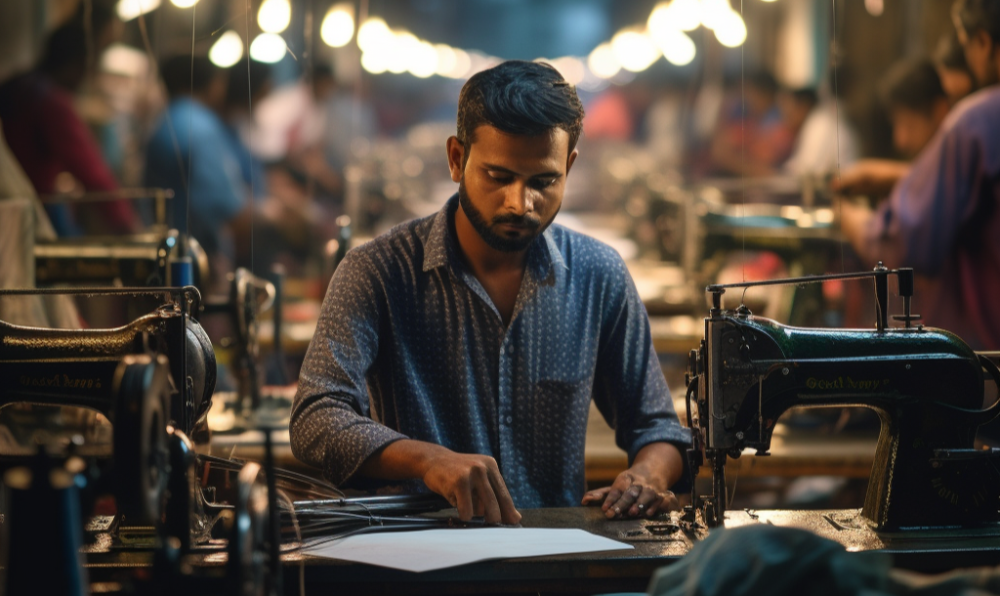
Diversificación de Exportaciones: La Estrategia de Bangladesh para Mantener la Competitividad en la Obtención de Ropa Ante la Disminución de la Demanda
Las exportaciones de Bangladesh han estado luchando este año, incluido su sector emblemático de textiles y prendas de vestir, que experimentó una caída del -10% interanual en la demanda de inspecciones y auditorías durante los primeros nueve meses de 2023. Los compradores con sede en EE.UU. en particular parecen estar reduciendo la adquisición de textiles y ropa de Bangladesh.
Para proteger sus exportaciones de futuros shocks, Bangladesh debe diversificar su oferta de proveedores, o arriesgarse a una mayor disminución en la demanda de adquisiciones en el futuro. Los compradores occidentales perspicaces monitorearán de cerca el viaje de Bangladesh mientras navega por estos desafíos.
Disminución en la Demanda de Adquisición de Prendas de Vestir en Bangladesh
Los compradores occidentales en la UE y EE.UU. están cada vez más alejándose de la adquisición de textiles en el sur de Asia. La demanda de inspecciones y auditorías en dos de las potencias textiles del sur de Asia, Bangladesh e India, se contrajo año tras año de enero a septiembre de 2023, (aunque la adquisición de textiles occidentales en estos países aún se mantuvo por encima de los niveles de la pandemia de 2021).
En Bangladesh, el sector de textiles y prendas de vestir vio una disminución del -10% interanual en la demanda de inspecciones y auditorías por parte de los compradores occidentales en los primeros tres trimestres de 2023. Esta tendencia es más fuerte entre los compradores estadounidenses, mientras que las empresas de la UE continúan dependiendo de los proveedores bangladesíes.
La Solución a la Disminución en la Demanda de Adquisiciones: Bangladesh Debe Diversificar las Exportaciones y Demostrar Calidad
Investigaciones publicadas recientemente indican que Bangladesh debería diversificar su oferta de proveedores para seguir siendo competitivo como exportador.
La industria de prendas de vestir del país, que actualmente está fuertemente orientada al algodón, puede beneficiarse de incursionar en textiles sintéticos. Mientras Bangladesh posee una participación del 34,7% en las importaciones de algodón de la UE, su participación en prendas no de algodón es solo del 12%. Expandirse más allá de su enfoque tradicional en el algodón y adoptar textiles sintéticos puede ayudar a Bangladesh a ampliar su atractivo en los mercados globales.
Figura 1. Participación de las exportaciones de Bangladesh en las importaciones de algodón de la UE frente a las importaciones no de algodón

Fuera del sector de prendas de vestir confeccionadas (RMG), hay mucho potencial de exportación en otros bienes de consumo –como calzado, cuero y textiles para el hogar, entre otros– pero Bangladesh debe fortalecer la capacidad de estos sectores para competir globalmente. Los bienes eléctricos y electrónicos también ofrecen valiosas oportunidades de exportación. Sin embargo, este sector está actualmente dominado por mercados de abastecimiento más establecidos como China, y las empresas occidentales pueden ser reacias a mover el abastecimiento a Bangladesh.
Para convertirse en un competidor en diversas industrias, Bangladesh necesita demostrar su capacidad para producir productos de alta calidad y confiables. Puede hacerlo fortaleciendo las instituciones locales responsables de las certificaciones reconocidas internacionalmente y asegurando que los fabricantes tengan acceso a las instalaciones de prueba necesarias. Al mostrar calidad constante y diversidad en sus exportaciones, Bangladesh puede mejorar su posición en el competitivo mundo del comercio internacional.
Figuras clave
La encuesta de QIMA a más de 250 empresas muestra que:
El sector textil y de prendas de vestir de Bangladesh tiene dificultades: En los primeros nueve meses de 2023, el sector textil y de prendas de vestir de Bangladesh experimentó una disminución del -10% interanual en la demanda de inspecciones y auditorías, lo que indica un año desafiante para la industria.
Diversificación como solución: Bangladesh posee una participación del 34,7% en las importaciones de algodón de la UE, pero su participación en prendas no de algodón es solo del 12%. Para proteger sus exportaciones y seguir siendo competitivo como destino de adquisiciones, Bangladesh debe diversificar su oferta de proveedores.
Related Articles


